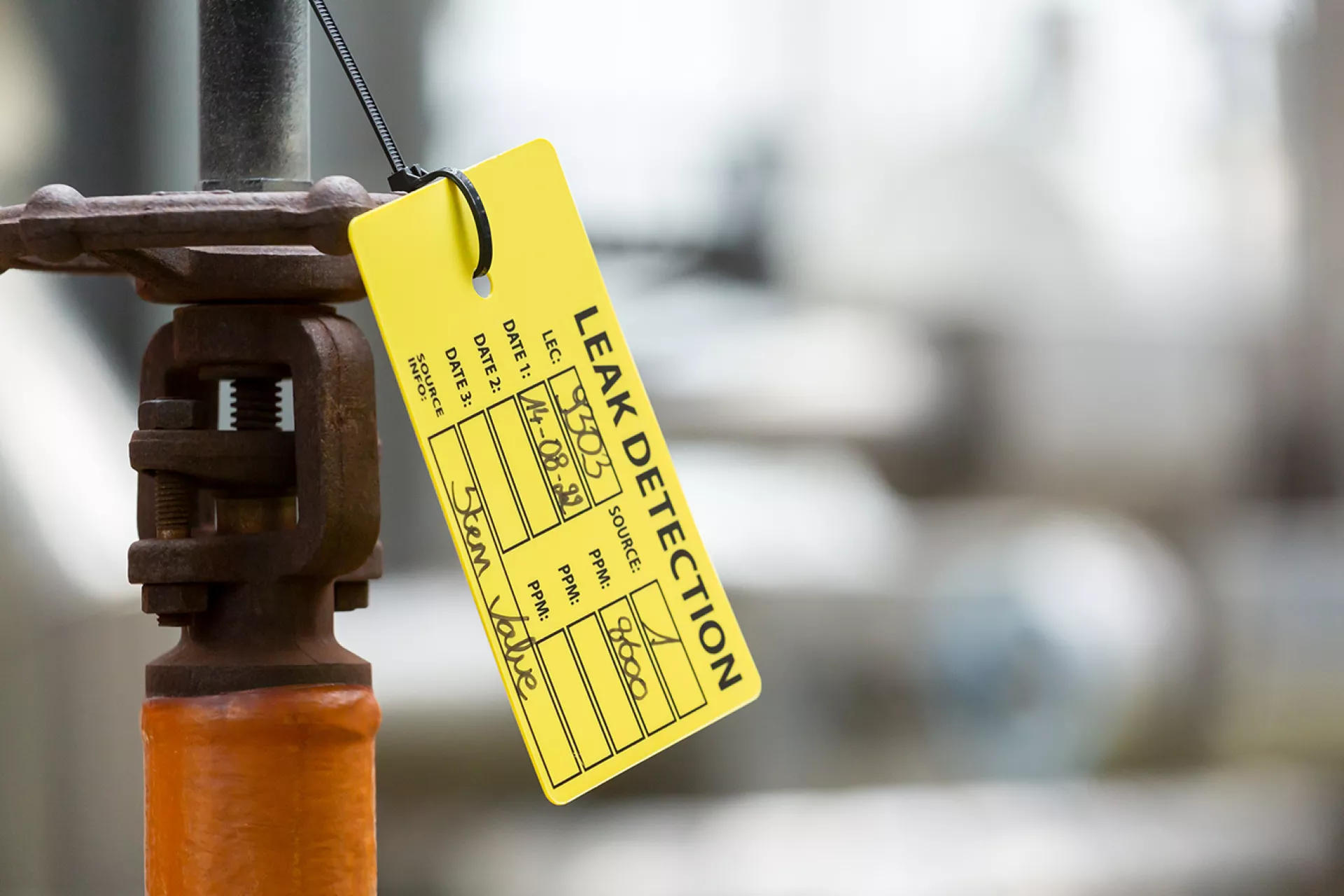
Planning an LDAR campaign? Check these 6 common pitfalls first
Performing Leak Detection And Repair (LDAR) surveys are defined as a key action in both the OGMP 2.0 Reporting Framework and the proposal for the EU Methane Regulation to measure, report, and verify methane emissions. With an LDAR program, you identify and reduce unintended or fugitive emissions from equipment in your oil and gas facilities, chemical, or petrochemical installations.
Are you planning to start or improve your LDAR program? Check these 6 common pitfalls first and make your LDAR program a success.
1. Measuring fast to save time
Are you screening fast with Optical Gas Imaging (OGI) cameras or FID / PID devices, such as a Toxic Vapour Analyzer to save time? It will only give unreliable results. A proper measurement takes time and will give credible emission figures. In general, a proper measurement with FID/PID takes 20 seconds per source. An OGI camera is much faster.
2. Being unaware of your current emission situation
If you do not know what your current emission situation is, you cannot compare data, define emission targets, and improve your emission performance. You might end up estimating, modeling, and performing random LDAR campaigns. But what can you derive from that data?
With a high-quality inventory of all potential emitting equipment or sources combined with proper classification, you create a credible baseline. It is your starting point to make your LDAR program successful. In fact, creating an inventory of all components that have been checked has been defined as a mandatory action in the proposal for the EU Methane Regulation.
3. Using only one measurement technique
The environmental ambition of your company is translated in the repair threshold. This repair threshold defines which measurement techniques can be used. The repair threshold in the upcoming final EU Methane Regulation will thus play a major role for you as an operator.
Screening with an OGI camera is ideal for screening large areas or for checking inaccessible sources safely. But OGI cameras do not detect small leaks and the device does not tell you how big the leak is. It will only give you a leak/no-leak differentiation. FID or PID devices can detect leaks from 1 ppm onwards and measure the ppm concentration, which is a much more accurate method.
Another superior technique is High Flow Sampling (HFS) or bagging. A High Flow Sampler captures the gas leaking from the device or component and determines the mass leak rates in kg/year. In our opinion, this is currently the most accurate method to determine the size of a leak on source level. High Flow Sampling is quite a unique method in the market.
From our experience, combining measurement techniques to properly measure in different situations works best.
4. Using the wrong equipment
Yes, that does happen. For example, a MiniRae device will not respond to CH4 and will not give you a relevant result. An accredited, professional service provider knows which measuring device to use for which substance.
Using a fit-for-purpose approach is crucial to obtain correct data, which then results in a credible emission report.
5. Measuring product streams with no VOCs
Measuring product streams without any VOCs (Volatile Organic Compounds), such as water and steam, does not add value and you will lose valuable time. By analyzing mass balances and flow sheets, you can define what runs through your product streams. This process is typically done before you start measuring onsite.

6. Not using response factors
Response factors for EPA Method 21 calculations are the ratio of the known concentration of VOC compounds to the meter reading of a calibrated measuring device. Using correct response factors is essential if you want accurate mass leak calculation results.
Tips to make your LDAR program successful
Until now, we have discussed the common pitfalls of LDAR, but we want to end by giving you some tips on how to make your LDAR campaigns successful.
- Follow an LDAR protocol, based on robust standards or regulation that applies to your area
- Build an LDAR scope cycle and define an annual scope
- Rely on skilled and experienced technicians who know what they are talking about. LDAR is more than holding an infrared camera
- Improve the accuracy of your LDAR data by having the measurements performed by a certified service provider
- Use LDAR management software instead of Excel sheets and leak lists to collect and manage all emission data. With a cloud-based emission management application, it will become much easier to split the product stream in the correct composition ratios, executing mass leak calculations according to protocols, processing repair information and generating emission reports
- Keep optimizing the program
- Remain disciplined and stick with a dedicated program cycle
Together we optimize your LDAR campaigns
In conclusion, there is a lot to pay attention to when performing a high-quality LDAR campaign. It is realistic to reduce fugitive emissions by 60% to 70%, already within the first year. Reach out to our experts to make your LDAR program a success and comply with current and new standards, optimize your maintenance activities, and report accurate (methane) emission data to stakeholders.


